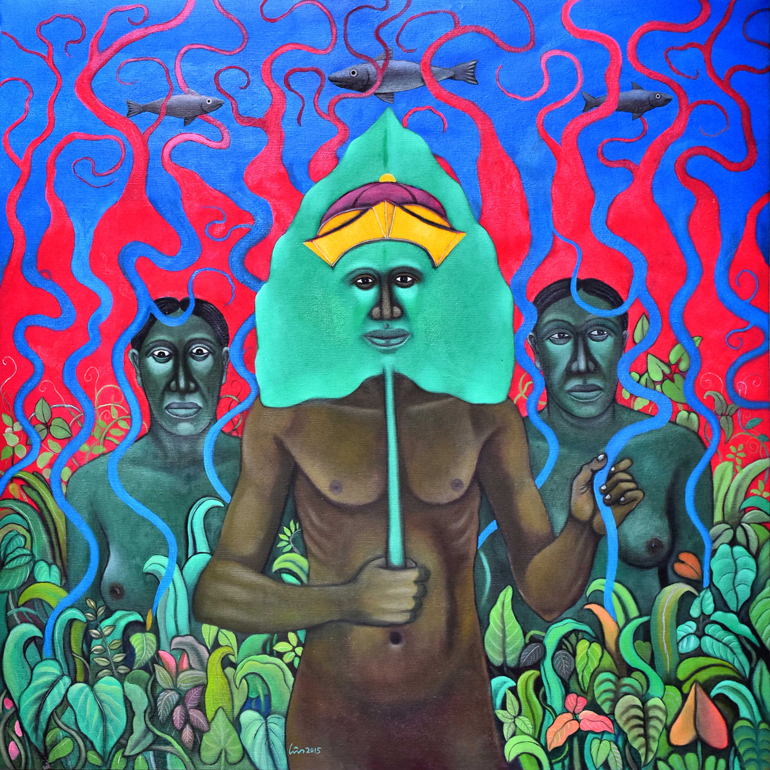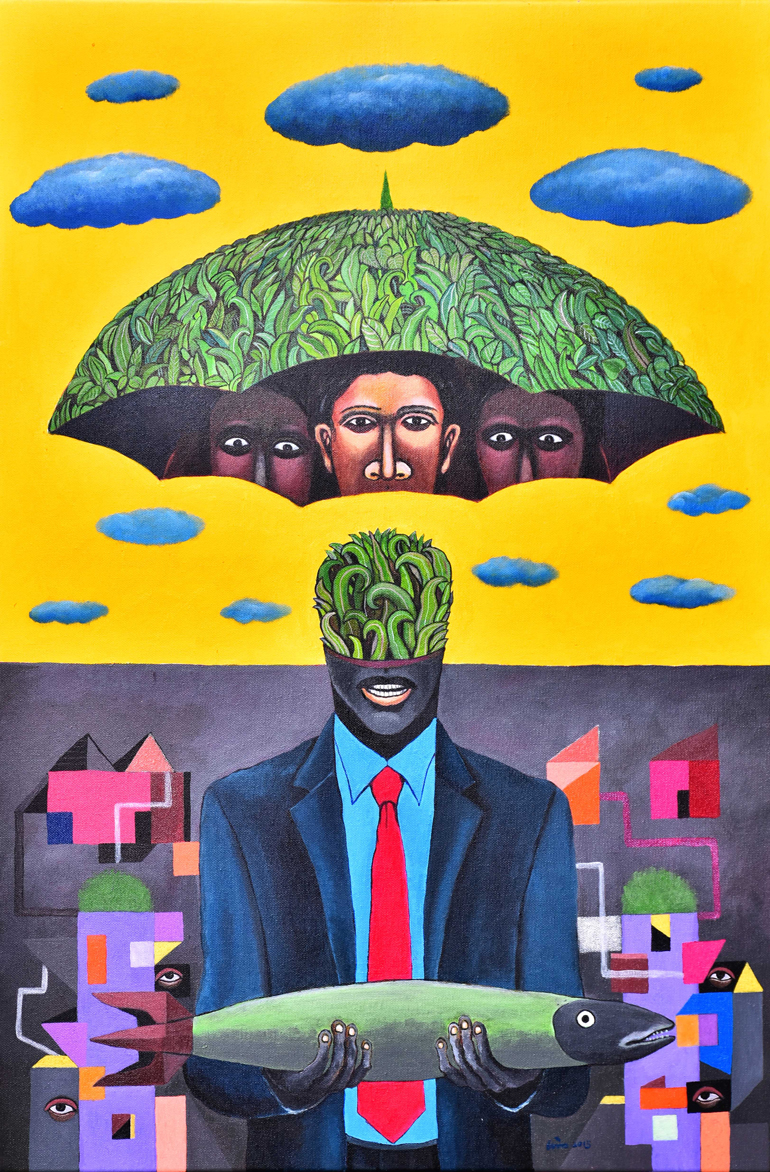Friday Dec 13, 2024
Friday Dec 13, 2024
Saturday, 18 June 2016 00:00 - - {{hitsCtrl.values.hits}}


Born in 1967 Sri Lanka, Rasika De Silva studied art at Kandegoda Maha Vidyalaya, Ambalangoda and went on to Sharadha Kala Nikethanaya in Colombo to complete his Diploma in Fine Arts. A printer by trade, Rasika De Silva chooses a sound palette of colours on his canvases as he explores the relationship of men and women with nature in his latest series of paintings ‘Nature And Humanity’. The Preview will be on 23 June. The exhibition will remain open until 20 July. Open Daily 10 a.m. to midnight at Paradise Road Galleries, 2 Alfred House Road, Colombo 3. Following are excerpts of an interview:
Q: What is your inspiration behind ‘Nature And Humanity’?
A: I see the content of my work as being nature and human-centric. The unbreakable bond between man and nature and the human attempt to sever this by destroying whatever is natural and the subsequent human-human conflict that arises is what I present in my work.
It is my opinion that the sole human struggle within the economical and material spheres is totally inadequate and unacceptable to counteract our problems. Without delay we have to carry out two or more endeavours or revolutions. For man to be more human and to conserve nature a more honest heartfelt and proactive struggle must be launched. Humans must have more faith and confidence in the inner and spiritual world rather than the outer physical one.
My firm belief is that most of the catastrophes faced by humankind presently could be resolved in the future. Getting rid of cruelty amongst human beings resolves internal pain and suffering. Not only do I try to explore these facts to the best of my ability in my work but I am willing to represent these values in my life also.

Q: Why do you choose to work with oil and acrylics as your primary mediums?
A: My style of painting rich in detail and colour match the classical feel of oil paints. I work slowly. Oil paints take a while to dry and therefore, I have the flexibility to change as I go along. Furthermore oil paints have a non- glossy depth that appeals to me.
The feel of acrylic paints is opposite to oil paint in feedback from the canvas. It dries faster than oil paint yet making major changes on the go is limited. I use these two mediums alternately as relief from the tedium of slower drying oil paints to faster drying acrylic paints and come back refreshed to oil paints. I like to experiment with mixed media and watercolor but the time factor is restrictive; I did however work with printing ink and palette knife recently.
Q: What is your strongest influence that drives you as an artist?
A: Nature is primarily my driving force and emotions influenced by contemporary development. Phenomena such as war, poverty, environmental degradation, floods, earth slips, loss of life and suffering caused thereby give me the impulse to paint. There is a saying that an artist cannot be stingy with his material or of himself if he wishes to be successful. One has to let go of caution to be creative. I get inspiration by viewing works of other artists on YouTube and visiting exhibitions.
Q: If you had the opportunity to change something about the art scene in Sri Lanka, what would it be?
A: I would like to change the sorry lack of education in aesthetic appreciation in Sri Lanka. The public must almost be addicted to buying art, for instance skimping on meals and other essentials to purchase a work of art they desire. The government and the corporate sector must foster art as a ‘bridge to harmony’ through which further ethnic and other conflicts can be distracted.
